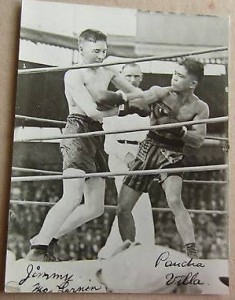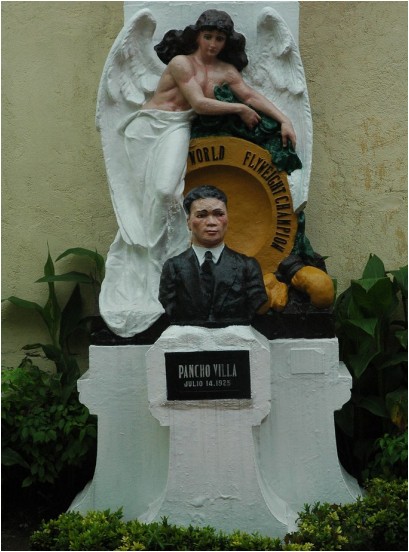
|
Philippines, 01 Jan 2026 |
Home >> News |
 |
||||
|
|
|
|
STORY OF PHILIPPINE BOXING PART IV: PANCHO VILLA'S UNTIMELY DEATH By Maloney L. Samaco PhilBoxing.com Thu, 02 Apr 2020  Pancho Villa successfully defended his world flyweight title four times over two years, inserting some non-title fights. It remained in his hands and never relinquished it until his death two years later. Before returning to the United States, he fought one more bout in Manila, against Clever Sencio, on May 2, 1925. It was the first world title fight involving two Filipino opponents. Villa prevailed by unanimous decision. The thousands of fans who saw the match at Wallace Field, now Luneta or Rizal Park, did not know that they had saw Villa's final victory and his second to the last fight in this world. Villa returned to the United States to prepare for his next match, a non-title fight against future Hall of Famer Jimmy McLarnin scheduled for July 4, 1925, at Ewing Field in San Francisco. (top photo) In the days leading to the fight, Villa's face became swollen due to an infected wisdom tooth. According to newspaper reports, on the morning of the fight, Villa went to a dentist to have the tooth extracted. The abscess became swollen and he was advised not to continue with the fight. Despite the pain and swelling inside his mouth, Villa went ahead with the fight with McLarnin. Villa used only one hand to protect his ailing face most of the duration of the fight. With this predicament, Villa surely lost, though he was not stopped and went the distance. It proved to be Villa's last fight. “It was a tough fight,” McLarnin was quoted by Peter Heller. “On the inside he kept hitting me on the ears. He was a great infighter. I wound up with two black ears. I heard of people winding up with black eyes, but I wound up with two black ears. He was a great little fighter.” Two or three days after the McLarnin fight, he had three more teeth extracted after an infection was diagnosed. Against his dentist's advice of bed rest, Villa spent the next few days drinking with friends. The following week the infection worsened. On July 13, 1925, his trainer, Whitey Ekwert, realized that he was in such a grievous state that he rushed him to a hospital. It was discovered that the infection had spread to his throat, resulting in Ludwig's angina. Dr. C.E. Hoffman scheduled a surgery to relieve the inflammation in Villa’s throat due to the infection, but he slipped into a coma while on the operating table and died the following day July 14, 1925. Villa “suffocated under the anesthetic” while being readied for surgery, Dr. Hoffman explained to the media. Attempts to revive the champion failed. Unfortunately, his death occurred only 17 days before his 24th birthday. A eulogy was delivered by The National Sports Alliance, a short-lived, New York-based body formed supposedly to protect and enhance the combat sports of boxing and wrestling. “The champion died fighting a man’s fight,” said James J. Johnston, their spokesman. “Villa was a credit to boxing, and the game cannot afford to lose such men.”  Pancho Villa's grave at Manila's North Cemetery. His remains were shipped back to Manila, and in August 1925, he was buried at Manila North Cemetery's Main Avenue corner 23rd street, just a few meters away from President Manuel Roxas' mausoleum. Villa's grave is indicated by his bust adorned with an angel and a brown pair of gloves. In 1961, Ring Magazine installed the Filipino boxing legend in its Hall of Fame and in 2002 named him as one of the 80 best fighters of the last 80 years. In 1994, he was also enshrined on the International Boxing Hall of Fame, the second Filipino fighter to be honored after Flash Elorde, who was born seven years after Villa's death. Click here to view a list of other articles written by Maloney L. Samaco. |
|
|
PhilBoxing.com has been created to support every aspiring Filipino boxer and the Philippine boxing scene in general. Please send comments to feedback@philboxing.com |
PRIVATE POLICY | LEGAL DISCLAIMER
developed and maintained by dong secuya © 2026 philboxing.com. |